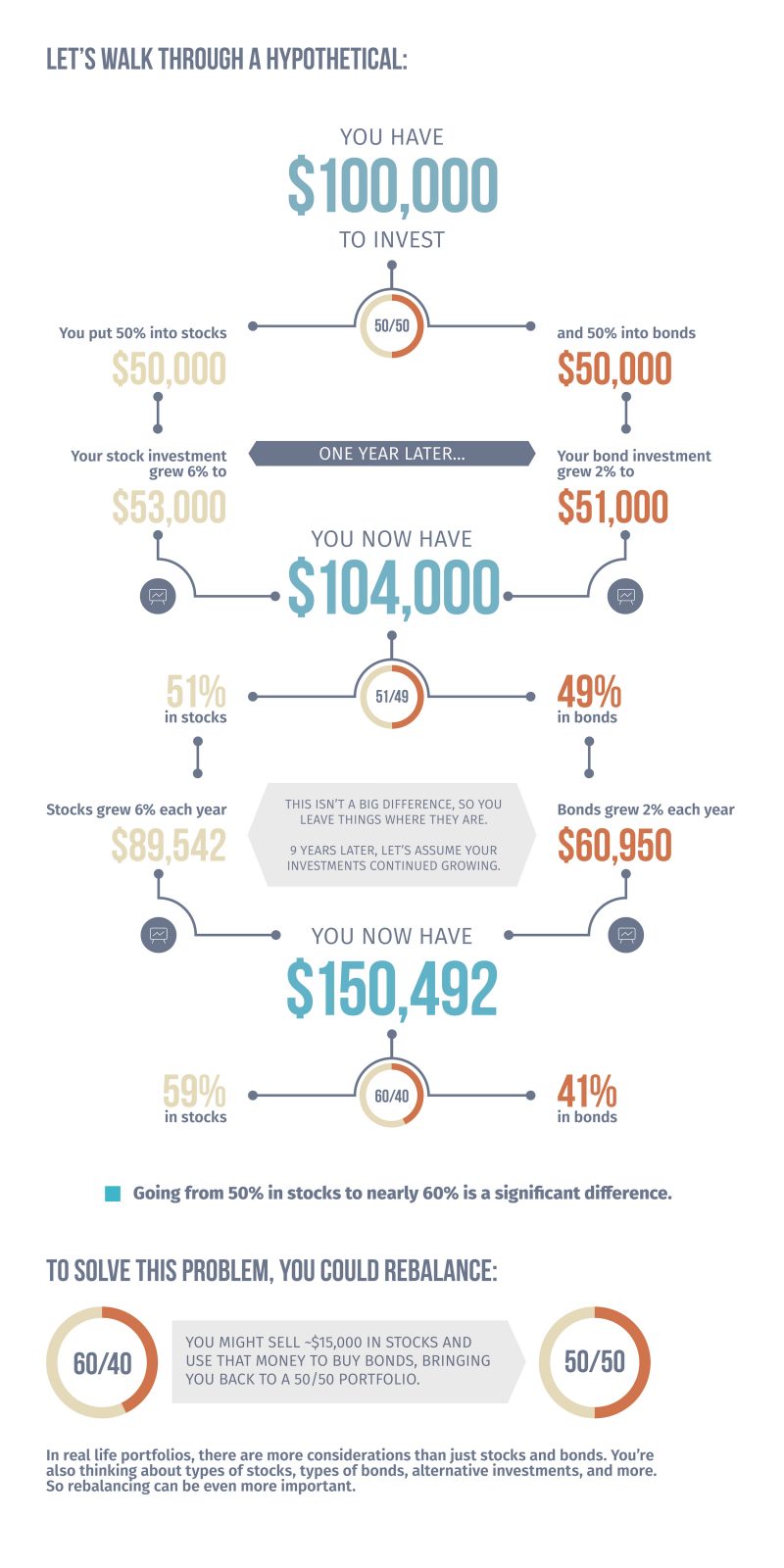How you combine assets in a portfolio is one of the most important tools advisors have to help clients reach their goals. Over time, these diverse assets change value in different ways — that’s the point of diversification. But if assets get too far out of balance, the way they’re combined may no longer reflect your goals. So advisors will rebalance your portfolio, to ensure it once again reflects your goals.
Since rebalancing is such a commonly used term, we wanted to dive a bit deeper into how the process works and why it’s needed.

At Harris Financial Group, we focus a lot on this second part: rebalancing within asset classes. It’s an area of rebalancing that can get overlooked because of how many firms approach rebalancing. It’s common for advisors to rebalance periodically, for instance once a year, with a focus on overall allocations — how much of a portfolio is dedicated to stocks, bonds, alternatives and so on. And while that strategy can work well, I prefer to take a more active approach.
For instance, if the S&P 500® is down 30 percent, as it was in 2020, there may be some stocks that are down 30 percent simply because the market is down. In reality, those stocks aren’t any less valuable than they were before the market selloff. In a case like that, I might rebalance the stock portion of a client’s portfolio to buy those stocks, since I would expect their value to increase quicker than some other stocks.
This type of rebalancing can make some advisors uneasy: In order to buy potential standout stocks, you may have to sell other stocks at a loss, and the human brain isn’t wired to do that. But that’s part of why you work with an advisor, since part of our job is trying to minimize emotion and look at investments strategically.
With this type of rebalancing, if the stocks that were down circumstantially bounce back, you could be in a better position than if you had taken a less aggressive approach to rebalancing. Of course, no strategy is guaranteed, and all investing carries risk. But adding another layer to how we think about rebalancing can help us spot opportunities in your portfolio.
Have questions about how we’re handling asset allocation and rebalancing in your portfolio? Book an appointment to discuss.
